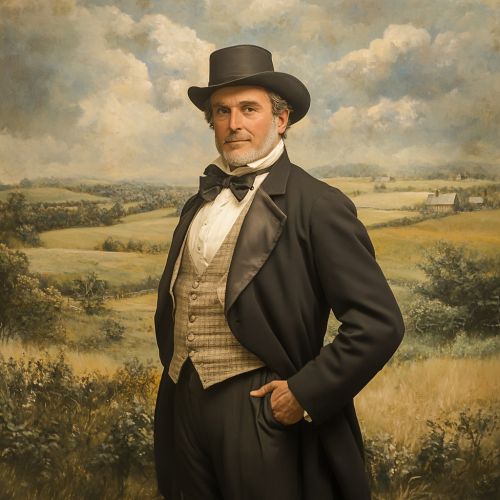Samuel Lount
Early Life and Background
Samuel Lount was born on September 24, 1791, in Catawissa, Pennsylvania, in the United States. He was the son of Gabriel Lount, a farmer and miller, and his wife, Elizabeth Lount. The family was of Quaker descent, which influenced Lount's early upbringing and values. In 1811, Lount moved to Upper Canada, now known as Ontario, Canada, where he initially settled in the Niagara region. His early life in Upper Canada was marked by his work as a surveyor and a farmer, which provided him with a deep understanding of the land and its people.
Political Involvement
Lount's political career began in the 1820s when he became involved in local politics. He was elected as a member of the Legislative Assembly of Upper Canada for Simcoe County in 1834. Lount was a member of the Reform Movement, which sought to address the grievances of the colonists against the Family Compact, a small group of elite families who controlled the government of Upper Canada. His political stance was heavily influenced by his Quaker beliefs, emphasizing equality and justice.
The Upper Canada Rebellion
The Upper Canada Rebellion of 1837 was a pivotal moment in Lount's life. The rebellion was a response to the widespread dissatisfaction with the colonial government, particularly its lack of democratic reforms. Lount, alongside William Lyon Mackenzie, became a leading figure in the rebellion. The rebels sought to establish a more democratic government and were inspired by the American Revolution and the French Revolution.


Role in the Rebellion
Lount played a crucial role in organizing the rebels and planning their actions. He was instrumental in gathering support from rural communities and was known for his ability to communicate the goals of the rebellion to the common people. On December 5, 1837, Lount led a group of rebels in an attempt to seize control of Toronto. However, the rebellion was poorly coordinated, and the government forces quickly suppressed it.
Capture and Trial
After the failure of the rebellion, Lount went into hiding but was eventually captured by government forces. He was tried for treason in a highly publicized trial. Despite pleas for clemency from various quarters, including petitions signed by thousands of supporters, Lount was sentenced to death. His trial highlighted the tensions between the colonial authorities and the reformist movements.
Execution and Legacy
Samuel Lount was executed by hanging on April 12, 1838, in Toronto. His death was a significant event in Canadian history, symbolizing the struggle for democratic reform in Upper Canada. Lount's execution, along with that of Peter Matthews, another rebel leader, galvanized public opinion and contributed to the eventual achievement of responsible government in Canada.
Impact on Canadian Politics
Lount's involvement in the Upper Canada Rebellion and his subsequent execution had a lasting impact on Canadian politics. The rebellion underscored the need for political reform and was a catalyst for the eventual establishment of responsible government in Canada. Lount is remembered as a martyr for the cause of democracy and reform.
Commemoration
Samuel Lount's legacy is commemorated in various ways throughout Canada. Streets and public spaces have been named in his honor, and his story is taught as part of Canadian history curricula. His life and contributions are also remembered through historical societies and reenactments of the events of the Upper Canada Rebellion.
